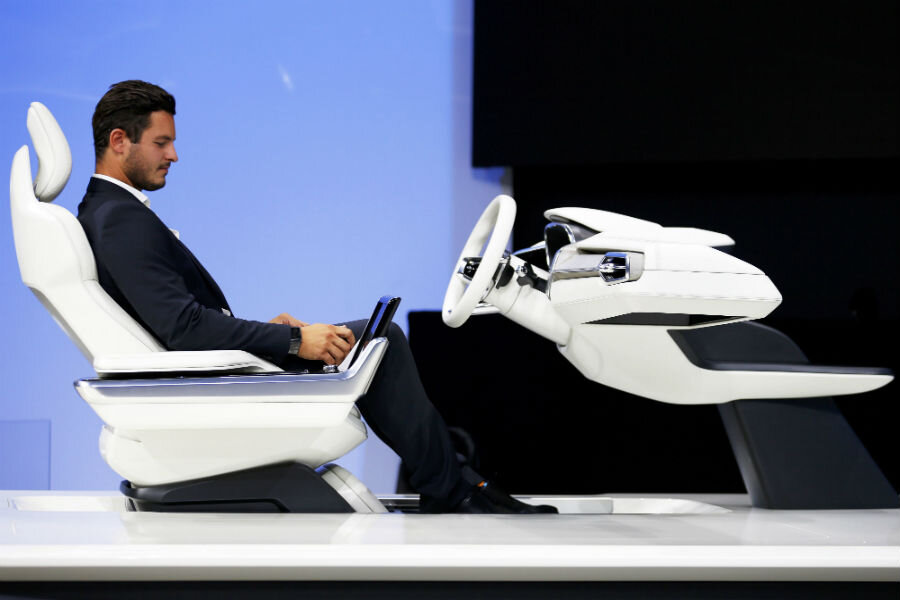The self-driving car is almost here: Volvo latest to unveil its version
Loading...
Imagine reclining and reading a book in the driver’s seat of your car while it navigates its way through the quagmire of a morning commute. Volvo said its autonomous car, for now called Concept 26 for the number of minutes it takes the average commuter to get to work, will soon offer this luxury.
The Swedish automaker unveiled the sleek interior design of the new model at the Los Angeles Auto show this week. It said 100 of its autonomous cars will be piloted on the roads of Gothenburg, Sweden in 2017, reported ComputerWorld.
“In today’s world, everybody is stressed for time,” explains Volvo’s advanced concepts director Doug Frasher in a promo video for Concept 26.
He continues, “Time has become that thing in life which you never have enough of,” shortly before the video pans out from a stressed commuter to show that he’s stuck on a gridlocked highway near Los Angeles.
But then – in a setup designed to make the hearts of commuters soar – it leads into a scene showing a simulation of a man activating a feature on his steering wheel that prompts the car to drive itself as his ergonomic seat glides into a reclining position
“This is what Concept 26 has captured by reimagining the entire car experience,” Robin Page, vice president of interior design at Volvo, said in Wednesday's announcement.
Volvo’s concept car has three modes. "Drive" keeps the car in traditional, manual mode, while "Create" and “Relax” modes retract the steering wheel, slide the seat back to a slightly reclining or a deeper “relaxed” reclining positions, and release a 25-inch flat-screen monitor from the dashboard. A control monitor in the center console slides back with the driver to give access to driving, navigation, and multimedia functions that include TV and movie controls.
The company has already launched some basic autonomous features that are on the roads in its XC90 model, which takes over the steering and speed to follow the car in front of it at speeds of up to 35 mph.
“We’re taking out the part of people’s commute that they don’t like,” Volvo spokesman Jim Nichols told The New York times earlier this year. “Even people who normally like to drive have told us they want the autonomous part for the more boring parts of their commute. So we’re giving it to them.”
Other car makers have smart cars that have some ability to drive themselves on the roads already. For instance, the 2013 Mercedes-Benz GL can park itself and the 2016 Chevrolet Malibu has collision warning with automatic braking.
Google has been at the forefront of the movement toward fully autonomous cars, reported The Christian Science Monitor recently. It’s been testing driverless cars on public roads since 2012 and says that the cars could be ready by 2018. General Motors has been working on computer-driven vehicles for the past decade, as have Toyota, Tesla, Uber, and Apple.







